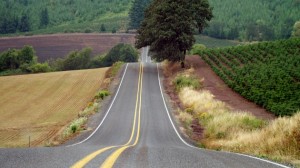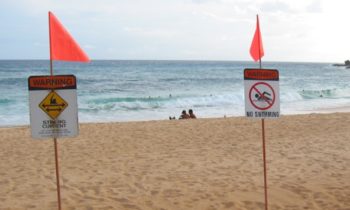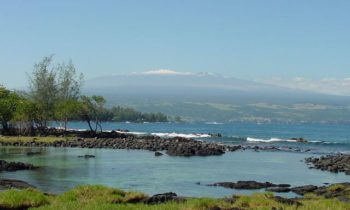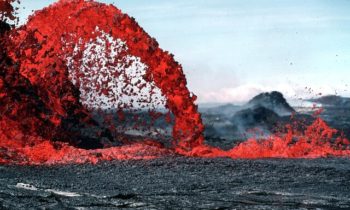Driving Across United States 2
In real estate the most important thing is location, location, location, and as far as real estate is concerned the United States has it all. Driving across the United States 2, Tips for Beginners and Foreign Drivers is a great place to start. Situated between the world’s two major oceans, the United States holds the most diverse ecosystems in the world, and based on population and land area, it is one of the largest in the world.
At 3.79 million square miles (9.83 million km2) it’s nearly impossible to see and experience everything the country has to offer, but for many it’s worth the try. This article is not intended to guide people on where to go, but provide information necessary to help people from other countries navigate the roads and explore the U.S.
The compete article in pdf version: Download Here Tools For Better Travel - How to drive across the U.S. for foreigners
Driving Across United States 2: Transportation Tips
RENTAL VEHICLES
There are many rental agencies, with many sizes and styles of vehicles. Do some research on models that suit your needs, and spend a few minutes checking out the “feel” of the car, because you may be in it a long time? Just make sure the company accepts your countries drivers’ license, or get an international license. Also try renting a vehicle you can sleep in, because it can save money in the long run.
- Most rental car agencies will let you pick up in one state, and drop off in another without charge, but check in advance.
- Make sure it has cruise control, and the horn, blinkers, air, radio, lights etc. work before you leave. There’s nothing worse than having a broken air conditioner and radio in the mohave desert.
- Take a few minutes to familiarize yourself with the vehicle, and check the car thoroughly on the inside and outside, especially the tires, before leaving and report any problems or damage before you go.
- For British, Irish, Australian, Japanese and other right-sided drivers, remember the steering wheel will be on the opposite side of the car you’d expect it to be, because driving is on the right side of the road in the United States.
- Most American rental cars are “automatics”, so you do not have to shift gears.
- Purchase insurance when driving a rental car - nearly all US states require it. It is available at most rental car dealers and can be of great help in the event of an emergency. Before you leave check to see if your car insurance covers your car rentals as well.
- Most rentals offer GPS systems at an added cost. Also your phone GPS may not work in the United States, so check beforehand.
- Some rental cars will have a “hidden” GPS that allows the rental company to “track” you, so make sure you check to see where you are allowed to drive.
- The legal minimum age to get a driver’s license in the United States varies from state to state but the average age is about sixteen. However, for those under 25 or over 70, check with the car rental agency before you leave to make sure that they will rent you a car.
- Carry your passport with you, in addition to your driver’s license and whatever credit card you used to book the car.
 HIGHWAY/FREEWAY TIPS
HIGHWAY/FREEWAY TIPS
The United States is famous for its road systems, and being able to drive for thousands of miles without having to pay for the use of the road. When traveling across the US, one typically uses freeways and highways, and the difference basically lies in how you get on and off. Freeways are closed off, and one has to take a long ramped entrance and exit to a freeway. Highways tend to be more open and can be entered and exited through both long ramps, or simply by turning off a street and onto the highway. However both typically have more than one lane, contain no stop lights, and are free to travel on in the United States. Here are a few pointers.
The speed limit in the US is rated in miles per hour, but most cars have both miles and kilometers on the speedometer. The conversion rate from kilometers to miles is to take the total miles, and divide them in half. Then add one half of remaining half to convert Kilometers to Miles. For example 100 km = 62 miles. Just take 100 Km and divide it in half (100/2 = 50). Now, take one half of the half of (so 50/2 is 25, and 25/2 is 12.5). Now add the two together 50+12 = 62. So 100 miles = about 62 kilos.
- Americans are known for being “aggressive drivers” so the number one rule is drive defensively. It’s a good thing to have manners and be polite, but sometimes being too polite is not a good thing, because it can slow down traffic and even cause accidents. Remember the US freeway system in larger cities is wider, longer, faster, and more complicated than other countries. When you are on a 6 lane freeway with thousands of other cars, you need to be able to change lanes smoothly even while driving at 70 mph.
- If Freeways scare you, try avoiding large cities, or park your car on the outside, and take the local public transport into and out of the city.
- All interstates are free of charge with some exceptions in various states, mostly over certain bridges or turn-pikes, so check your route before you go.
- You can tell what direction you are going by the interstate’s number: Odd numbers usually head north-south (101, 5, 55), even usually run east-west (10 20 80).
- East of the Mississippi River the typical speed limit is 65 mph, and on the west side, it is basically 70 miles per hour. However speed limits change depending on population size. So the more rural the area, the higher the speed limit.
- Remember in the United States most drivers go above the speed limit by 10 – 20 mph. So even if the sign says 65, the average speed will be more like 75 or 80. Although the US uses a police force known as the highway patrol, many officers will not ticket people unless they are going faster than the flow of traffic.
 Highway signs are often color coded to indicate what they mean:
Highway signs are often color coded to indicate what they mean:
- Signs with a green field and white letters show route information, and they indicate places, distances, and places (including exits.)
- Signs with a blue field and white letters are hospitality signs, and they show rest areas, food, hotels, hospitals, gasoline, etc.
- Brown signs with white letters are heritage signs. These indicate historical attractions, entertainment (amusement parks), campgrounds, and natural attractions like national parks or protected natural areas.
- Red or orange signs equal - caution, danger, or stop. When you see red or orange signs of lights they are not just a suggestion, but a warning to slow down, stop and pay attention. For example - an upside down triangle means you must yield to crossing traffic, and a blinking red light means the same thing as a stop sign, so stop and pay attention before you proceed.
- Yellow signs or lights mean “caution.” A blinking yellow light means “to slow down and go ahead with caution”. Yellow signs are commonly found in areas where wildlife or small children are present. So pay attention in rural areas because it’s common for large animals to wander into the road, and hitting one is bad news for both of you, and hitting a child is bad news for everyone.
DRIVING ACROSS UNITED STATES 2: GENERAL RULES AND LAWS
- Stop in BOTH directions for any school bus with flashing lights.
- At a 4-way stop, drivers must proceed in the order in which they have arrived. If there is a tie, the vehicle on your right has right of way.
- A lower speed limit (often 20 mph) is strictly enforced near schools, even after school hours.
- Watch for special lanes on the freeway which have a diamond shape painted on the pavement. These are designated “car pool lanes or high occupancy vehicle lanes” and are for cars with more than one person.
- If you are stopped by a police officer, park ranger, state trooper, or highway patrolman: Pull over to the right side of the road as soon as it is safe to do so, and DO NOT GET OUT, but stay inside and turn on the light so they can see you more clearly. The officer will park behind, and walk up to you. He or she will first ask for your identification: (1) your driver’s license, (2) your registration papers for the vehicle, and (3) proof that you have insurance to cover any potential liability from an accident. Do not argue with them or ask why you are being pulled over, because it usually makes matters worse. Let them talk to you first, listen politely, and then explain yourself. If you are polite (or pathetic) enough, they might just give you a warning.
- You must stop for pedestrians in a cross walk.
- Making right turns on red signals after stopping is allowed in most states.
- In urban areas, be careful not to block intersections (with or without traffic lights) when traffic backs up. This is called “blocking the box” and if there is a police officer around, you will get a ticket because it can cause gridlock.
- Two “major US driving sins”, If someone is tail-gaiting you, just let them pass, and try not to cut people off (merging in front of someone too close or too quickly).
- Most gasoline stations require you to pay before filling up, and you may have to go inside to do so.
- Plan your journey and know your next turn. Although roads are generally well-marked, heavy traffic conditions on multiple-lane roads can make advanced movements essential.
- If you get lost, park in a shopping area, rest stop, or seek a restaurant and ask for help (this can save hours of frustration and gasoline).
- In the event of a flat tire or other road emergency, try to ease yourself to the right side of the road where most US roads have a narrow shoulder to park on. Turn on your emergency blinkers, to tell other drivers. If you have room most vehicles carry extra tires in the trunk, or use a mobile phone or find a call box (located periodically along some major highways). Most auto insurance covers the cost of a tow-truck.
- Pay attention to signs that say “four-wheel drive only”, because a typical sedan or minivan WILL NOT be able to withstand rocky trails, craggy surfaces, and icy conditions up a mountain pass. If you want to explore rugged terrain rent a vehicle with 4-wheel drive.
- If you see someone turning their headlights on and off when they pass, it usually means, that your high-beams are on, or that there is trouble ahead (like a highway patrol), so make sure your headlights are on low, and slow down, you might just save yourself an expensive speeding ticket.
- Parking along a road must be on the right side of the road - going with the traffic, not against.
- Wear a seatbelt. This is the golden rule of driving in the U.S. All states need seatbelts for drivers, and most states require them for passengers, even children (most states even require a special seat for children under 50 pounds.)
- Babies and small children generally are not allowed to sit in the front seat in America; the passenger’s side airbag can suffocate a child or baby if it deploys in an accident.
- It should be obvious, but never drink alcoholic beverages and drive (Blood-alcohol levels to be legally inebriated average around .08). Do not even have (or keep) any open bottles of alcohol, even beer, in the car.
- If you do hit somebody or something, stop or you will be charged with hit and run (a serious offence in most states). If it is a person, get out of the car, and find a way to call an ambulance or police immediately, and help if you can. If it is simply a damaged car, exchange information with the other party and tell the rental dealership and police as soon as possible. They will want to know of it as it happens and if you have any questions they most likely shall oblige. If the other person leaves, make sure you get the license plate number and vehicle description (if not you may be held responsible).
DRIVING ACROSS UNITED STATES 2: DIFFERENCE IN DRIVING TERMINOLOGIES
- Interstate highway, expressway or freeway = motorway
- Interchange or exit = junction
- Pass = overtake
- Lane = carriageway
- Marked crosswalk = zebra crossing (note that US drivers typically do not stop for crossing pedestrians unless on a red or flashing red signal; however, it is wise to be cautious for any pedestrian that may cross in front of your vehicle but be careful about making sudden stops because the vehicle behind you may not expect it)
- Rest stop = services (note that many US “rest stops” are more frequent but only have WCs, picnic tables, and vending machines, and may even be deserted at times)
- Traffic circle = roundabout
- 9-1-1 = 999 (emergency number for police, fire, and medical assistance, including calls from mobile phones)
Driving Across United States: Tips for Beginners and Foreign Drivers is probably the best advice you will find on the web today.






I simply want to say I am just very new to blogs and absolutely savored your page. Probably I’m likely to bookmark your website . You definitely come with terrific articles. Thanks a lot for sharing with us your website page.
Have you ever considered about including a little bit more than just your articles? I mean, what you say is important and everything. But imagine if you added some great images or video clips to give your posts more, “pop”! Your content is excellent but with images and video clips, this blog could certainly be one of the most beneficial in its niche. Wonderful blog!
Simply want to say your article is as amazing. The clearness in your post is simply cool and i can assume you are an expert on this subject. Fine with your permission let me to grab your feed to keep updated with forthcoming post. Thanks a million and please keep up the rewarding work.
I have been examinating out many of your stories and i can claim pretty clever stuff. I will surely bookmark your blog.
Very well written post. It will be helpful to anybody who employess it, including me. Keep doing what you are doing - for sure i will check out more posts.
As I web-site possessor I believe the content matter here is rattling excellent , appreciate it for your hard work. You should keep it up forever! Best of luck.
Thank you for another informative site. Where else could I am getting that type of info written in such an ideal method? I’ve a venture that I am just now running on, and I have been at the look out for such information.
Hi! Someone in my Facebook group shared this website with us so I came to give it a look. I’m definitely enjoying the information. I’m bookmarking and will be tweeting this to my followers! Great blog and fantastic design and style.
Thanks , I have just been searching for info approximately this topic for a long time and yours is the greatest I have came upon till now. But, what in regards to the bottom line? Are you certain concerning the source?
Superb site you have here but I was wanting to know if you knew of any message boards that cover
the same topics talked about in this article? I’d really
love to be a part of community where I can get feed-back from other experienced people that
share the same interest. If you have any suggestions, please let me know.
Kudos!